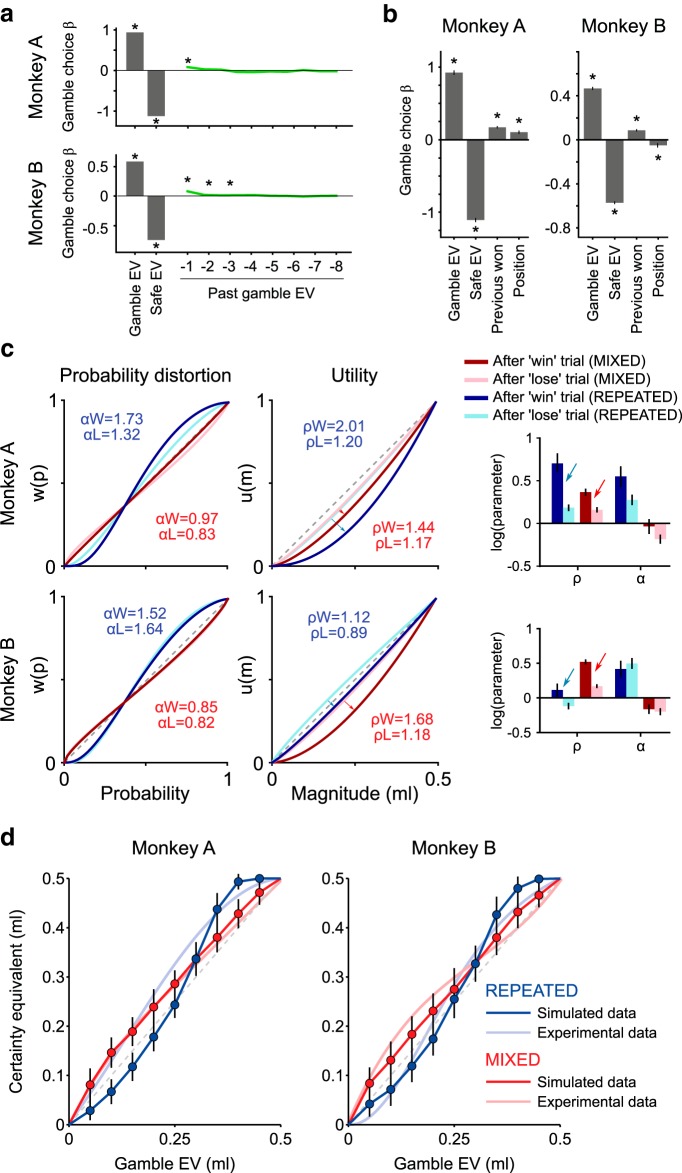Figure 7.
Sequence-dependent effects of trial history on probability distortion shape. a, Influence of past trials on current trial's choice. Standardized regression coefficients (mean ± SEM across sessions) for current trial's gamble EV, safe reward magnitude, and previous trials' gamble EV (up to eight trials in the past). *Coefficients significantly different from zero (t test). For both monkeys, the choice behavior depended on at least one trial in the past. Positive regression coefficients indicated that an increase in the previous trial's gamble EV induced the monkeys to choose the current trial's gamble option more frequently. b, Effect of the past outcomes on gamble choices. Standardized regression coefficients (mean ± SEM across sessions) for gamble EV, safe magnitude, previous trial's gamble outcome (0 or 0.5 ml), and gamble position. A significant positive coefficient for the previous outcome indicated that monkeys chose the gamble more often when the previously chosen gamble was successful (0.5 ml) than when it was not successful (0 ml): the gamble was chosen more after a win than after a loss. In terms of BIC score, this model (Eq. 15) was at least as good at describing the choice data compared with the model with no past trials' influence (Eq. 2) (Monkey A: BIC2 = 84.2, BIC14 = 82.3, t test: p = 0.14; Monkey B: BIC2 = 221.4, BIC14 = 215.8, t test: p = 5.8 × 10−5). c, Effect of past outcomes on the utility and probability distortion functions. The utility function appeared more convex following a gamble-win trial (0.5 ml reward) than following a loss (no reward), suggesting that gamble outcomes had an influence on the relative value of gamble and safe options on the next trial. The utility parameter estimates following win and loss trials are indicated as αW and αL, respectively, whereas probability distortion parameter as ρW and ρL, respectively. Arrows indicate the change in the utility parameter between loss and win trials. Error bars indicate the 95% CIs of the parameter estimates. d, Simulated effect of EV update mechanism based on past outcomes. Mean ± SEM across simulated sessions (N = 50) of the CE resulting from choices simulated using the learning model (Eq. 16) in MIXED and REPEATED conditions. The parameters used in the simulation were recovered from the MLE procedure with the same model separately for each monkey. Linear probability weighting and linear magnitude coding were used in the simulation, demonstrating that an EV update mechanism interacting with the local trial structure could explain the observed change in risk attitudes across conditions without explicitly introducing a nonlinear probability distortion.

